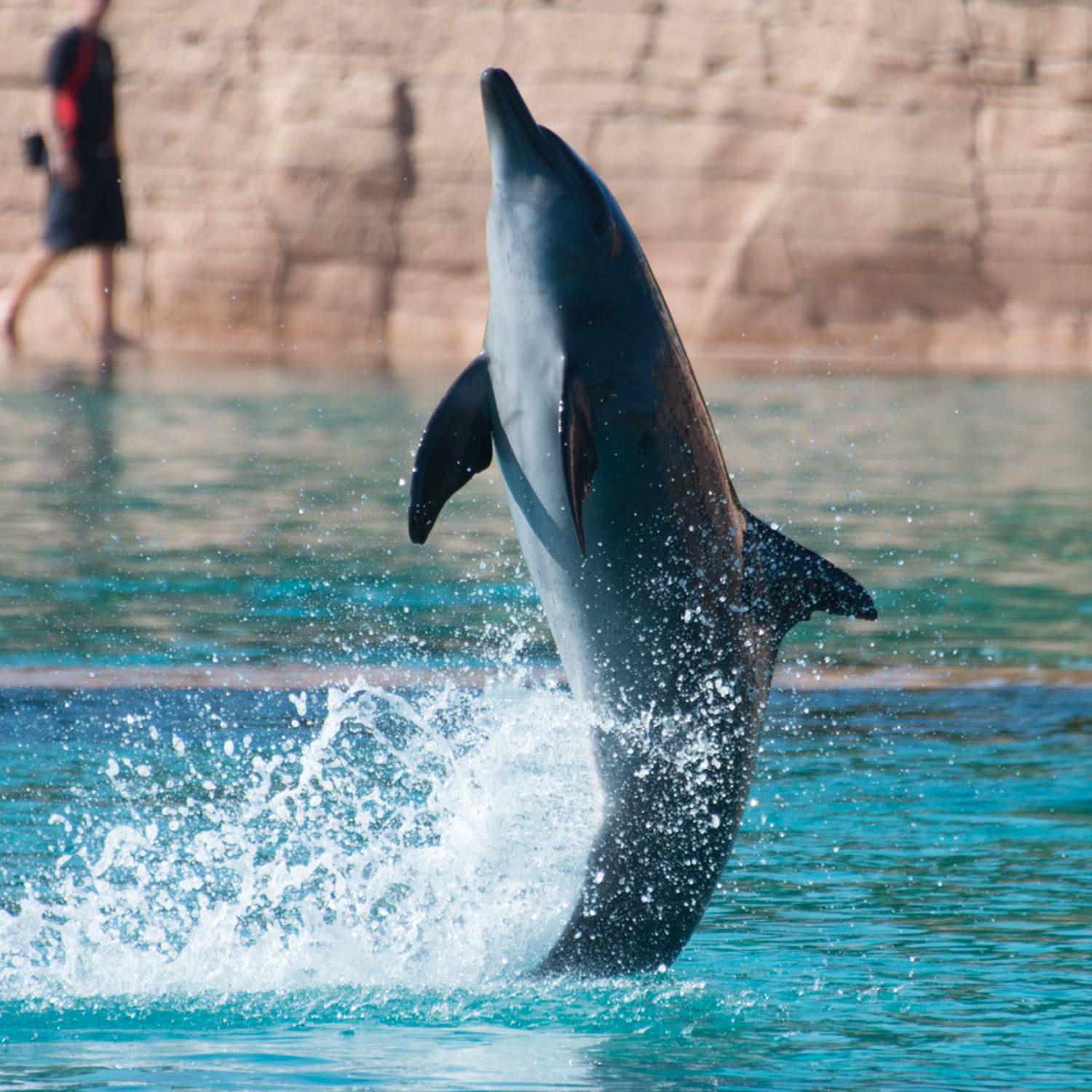Taesan and Boksoon, two Indo-Pacific bottlenose dolphins from the Seoul Grand Zoo, could be let loose into the wild in late June, . If carried out, the dolphins would be the sixth and seventh of their kind released in the past three years.
The dolphins were among those illegally caught in 2009 and 2010 and sold to the Pacific Land entertainment park on South Korea’s Jeju Island. South Korea’s supreme court ruled in 2013 that the park had to give up Taesan, Boksoon, and two others. The others were rehabilitated in pens off Jeju and released a few months later, but Taesan and Boksoon were too sick to be set loose, so they were moved to the Seoul Grand Zoo for two years.
Taesan and Boksoon are now in a marine pen off Jeju, but they’ll need to demonstrate that they’ve regained the ability to forage for live prey before they’ll be freed. While the dolphins released in 2013 appear to be healthy, these two could be different. “Everything is case by case, and you should never prejudge the success of a second attempt based on the first,” Naomi Rose, a marine mammal scientist at the Animal Welfare Institute, told National Geographic. “If it looks like they are struggling, I hope they have a contingency plan to rescue them and care for them.”
If the release goes ahead as planned, it could poke a hole in the argument from marine parks in the United States and abroad that dolphins and whales won’t survive in the wild after spending their lives in captivity. “These efforts are demonstrating the feasibility of rehabilitating and releasing dolphins and whales who have been in captivity for several years,” Lori Marino, executive director of the Kimmela Center for Animal Advocacy, told Tim Zimmermann, the writer of the National Geographic piece. Zimmerman is an �����ԹϺ��� correspondent whose coverage of the death of a SeaWorld trainer led to the award-winning 2013 documentary Blackfish.
Until the planned release date, Taesan and Boksoon will be weaned off human contact so they no longer associate people as food providers. It’ll also help them reorient to an ocean habitat.


